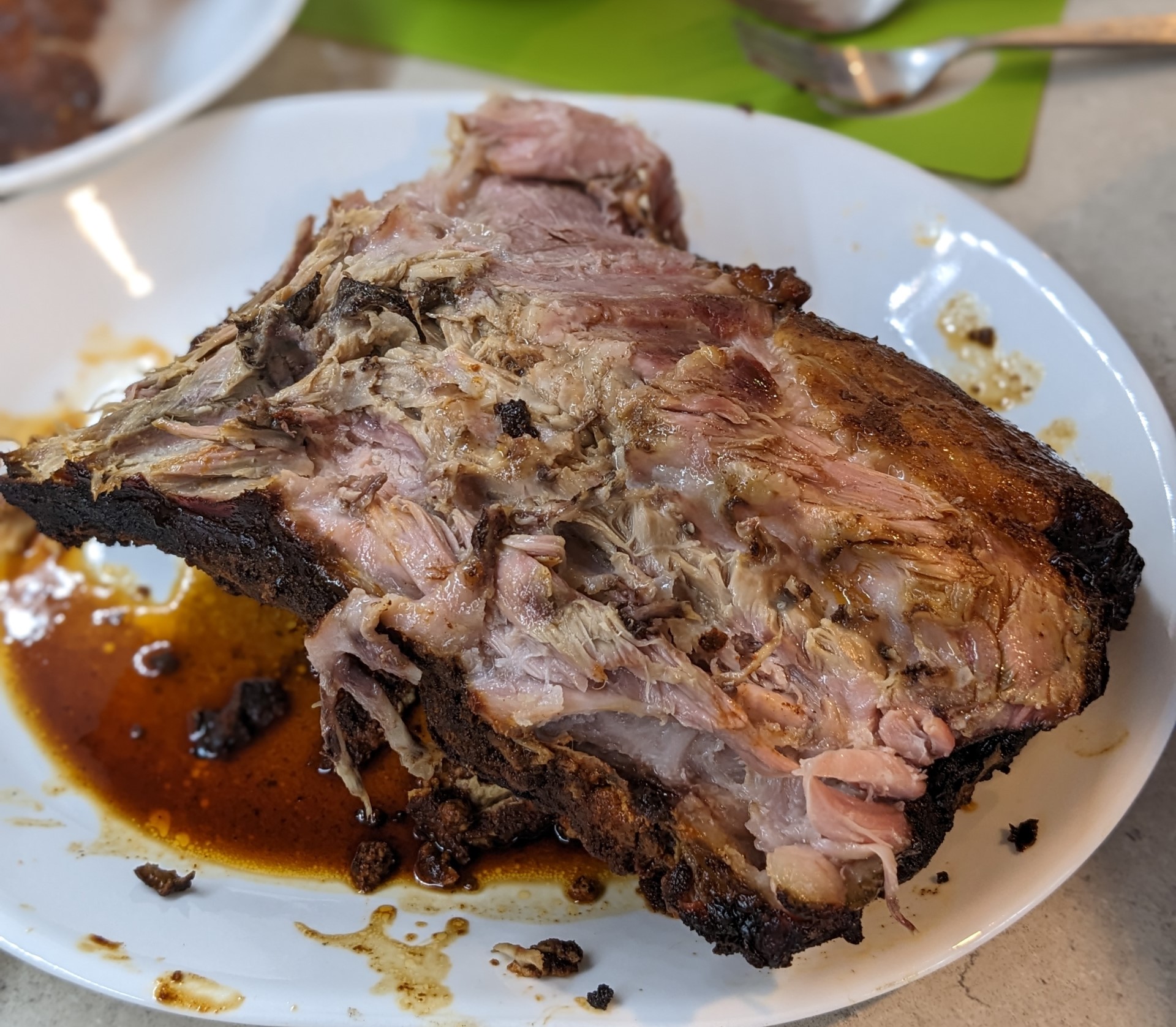Micromanaging a needy piggy.
Continuing on with my calamitous barbeque odyssey, in late Jan I smoked a big ol chunk of pork shoulder for pulled pork.
Unlike my recent brisket adventure which was largely hands-off, this one required constant intervention every 30 minutes, due to the different cooking vessels: the pellet smoker of the brisket is very much “set and forget”, whereas this pork was smoked in my charcoal smoker.
The charcoal smoker requires constant adjustment of the coals, the dampeners, and the grate height to maintain a consistent temperature.
Preparing the meat #
Unlike brisket, this pork shoulder was not trimmed in any way at all. It was simply slathered in dijon mustard and the pre-mixed spice mixture was sprinkled ontop.
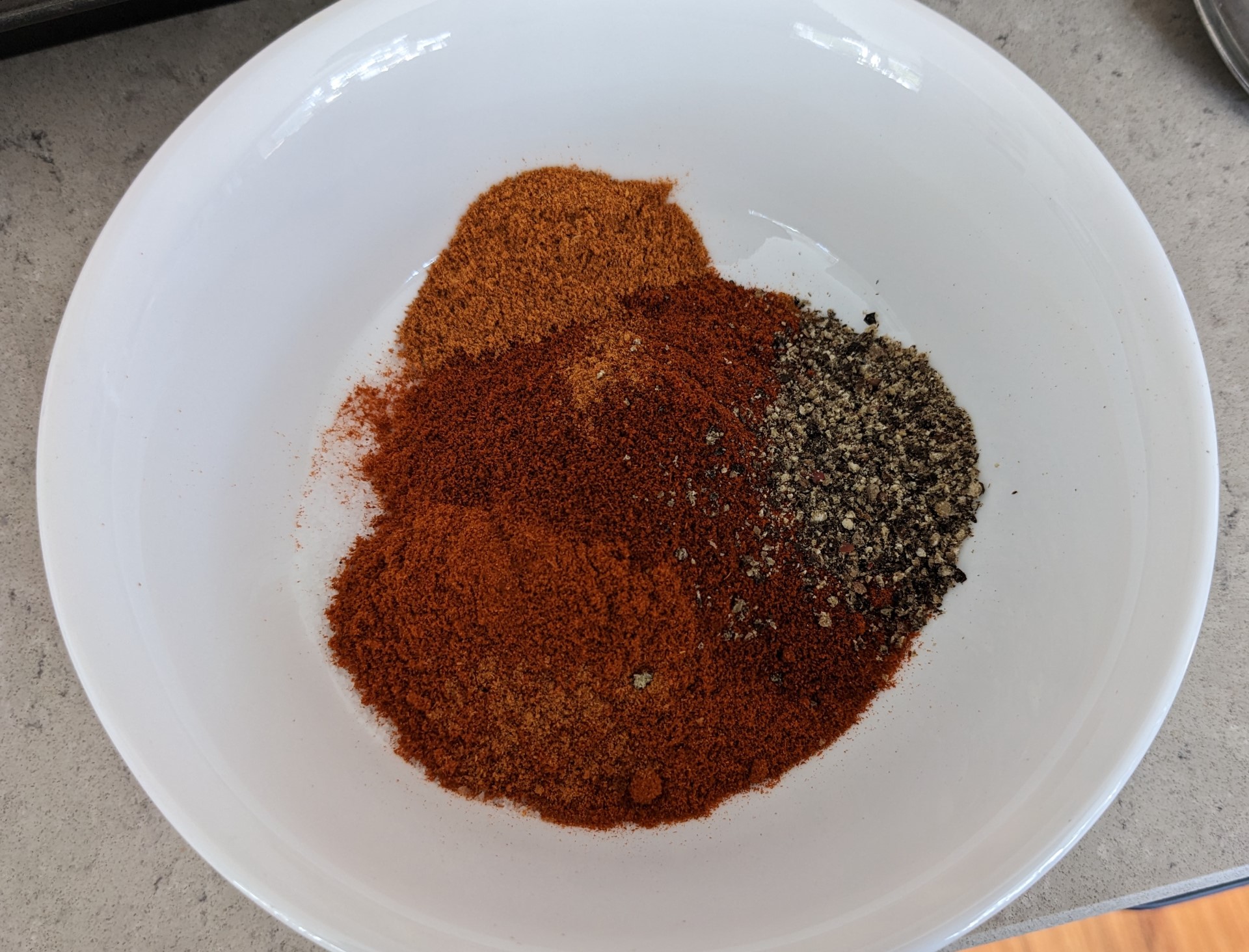
What I learned from this method was applied to the brisket the following week: don’t premix the spice, as the finer spices soak up the binder’s surface area, thus preventing the larger salt and pepper grinds from adhering. The spice mix originally contained 1 tablespoon of kosher salt, but an additional tablespoon was added during the rub application to compensate.
The fire #
Lump charcoal coals were lit at 9:50 a.m. and left to heat up for the next 30 minutes, before the meat was added to the fire at 10:20 a.m.
One thing I did differently in this smoke as compared to previous attempts was the use of smoking chunks rather than chips: these were a clear winner, despite their tendancy to catch fire and dramtically increase the cabinet temperature. A mix of apple and cherry wood chunks was used.
A new bag of lump charcoal was used, which made a huge difference compared to previous smokes: these were consistently larger lumps, which meant the heat management was more predictable.
Cook cook cook #
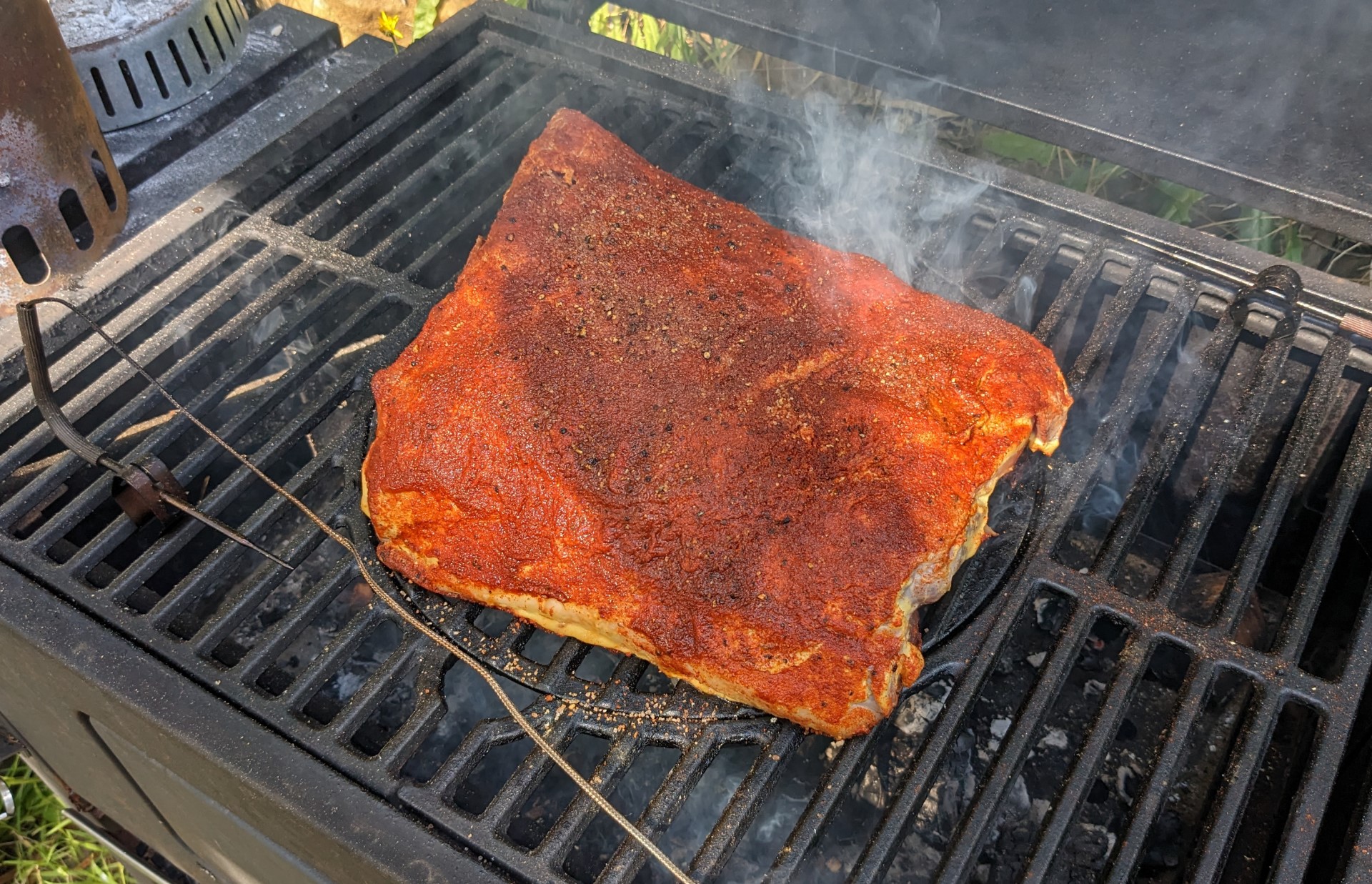
The pork was cooked at a cabinet temperature of 110 degrees celsius, until the internal temperature of the meat reaches 90-96 degreees celsius.
This fire required constant attention. Every 30 minutes I was getting up to tweak something: add coals, move coals, remove coals, add smoking chunks, adjust the baffles…
It was the most attention I’ve needed to give a piece of meat when cooking, and frankly, it was exhausting.
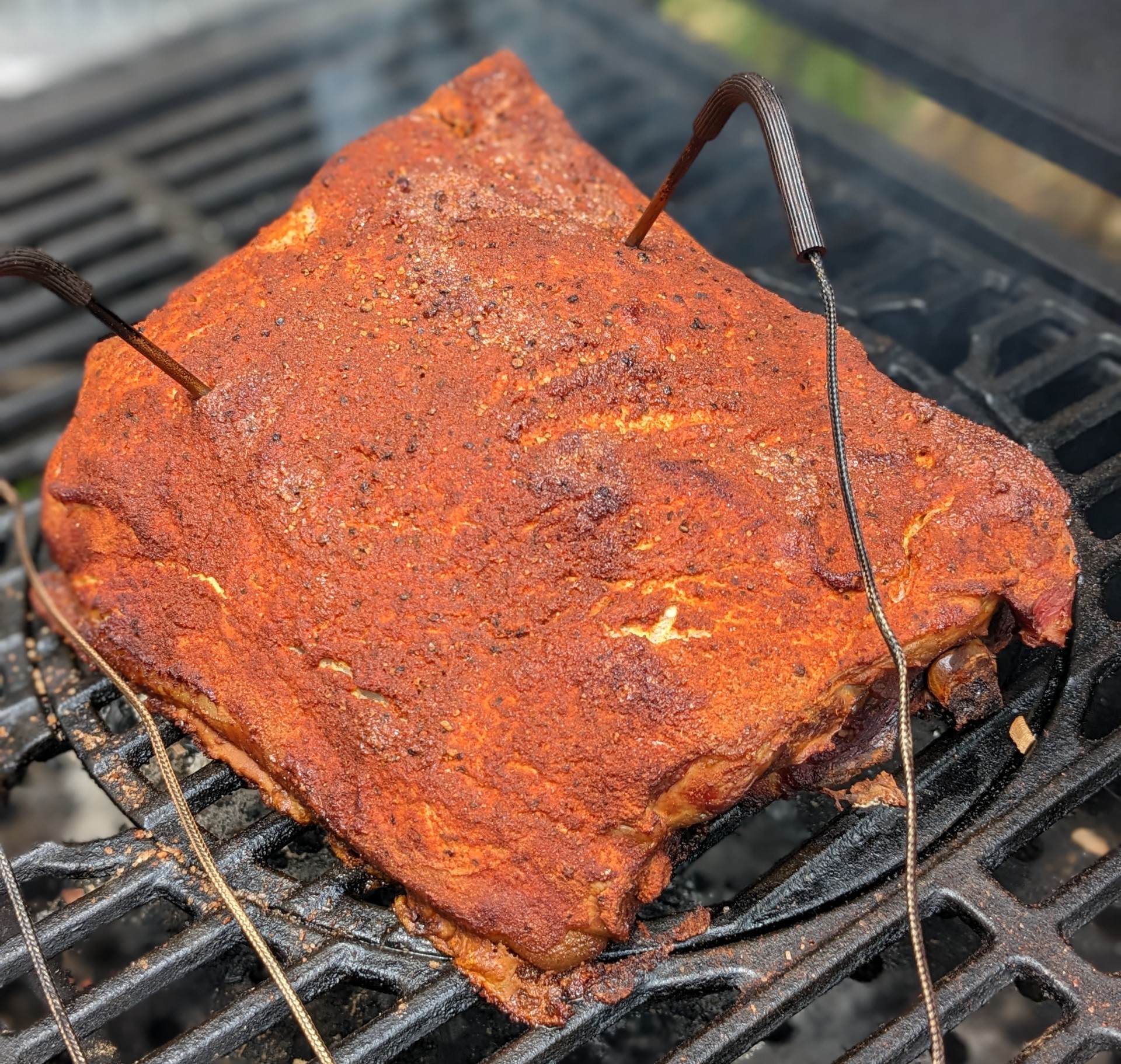
The meat was spritzed with 50/50 water/apple cider vinegar every hour.
The pork was wrapped in pink butchers paper once it reached 80 degrees celsius, about 4 and a half hours into the smoke. The smoking continued for another four hours until 6:45 p.m., when it was removed from the smoker and left to rest for an hour.
The result #
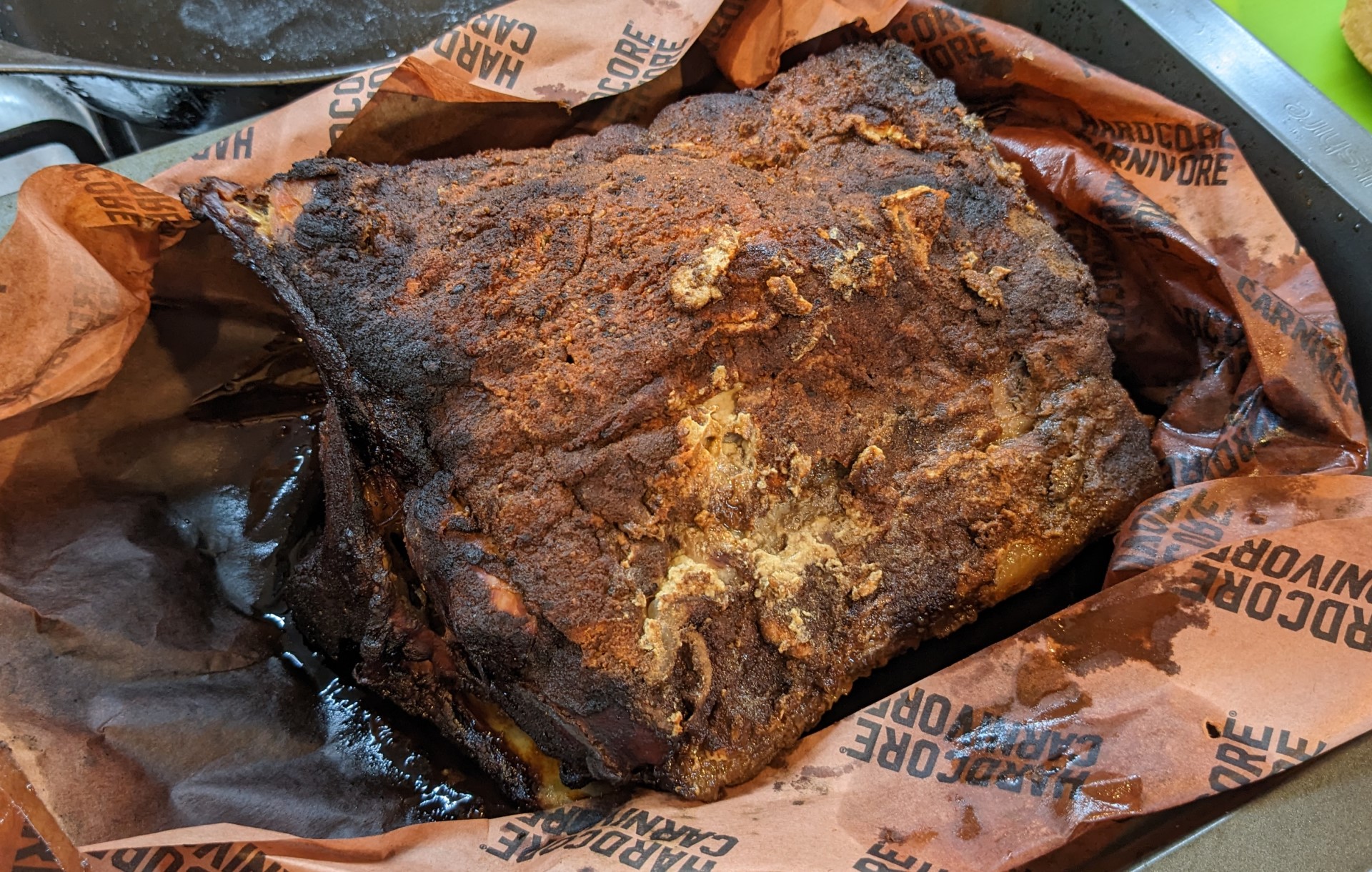
Solid 10/10 on the Happy Fatso scale. Juicy, tender, and pulls apart with the softest touch.
Total smoke time was just under 8 hours.
